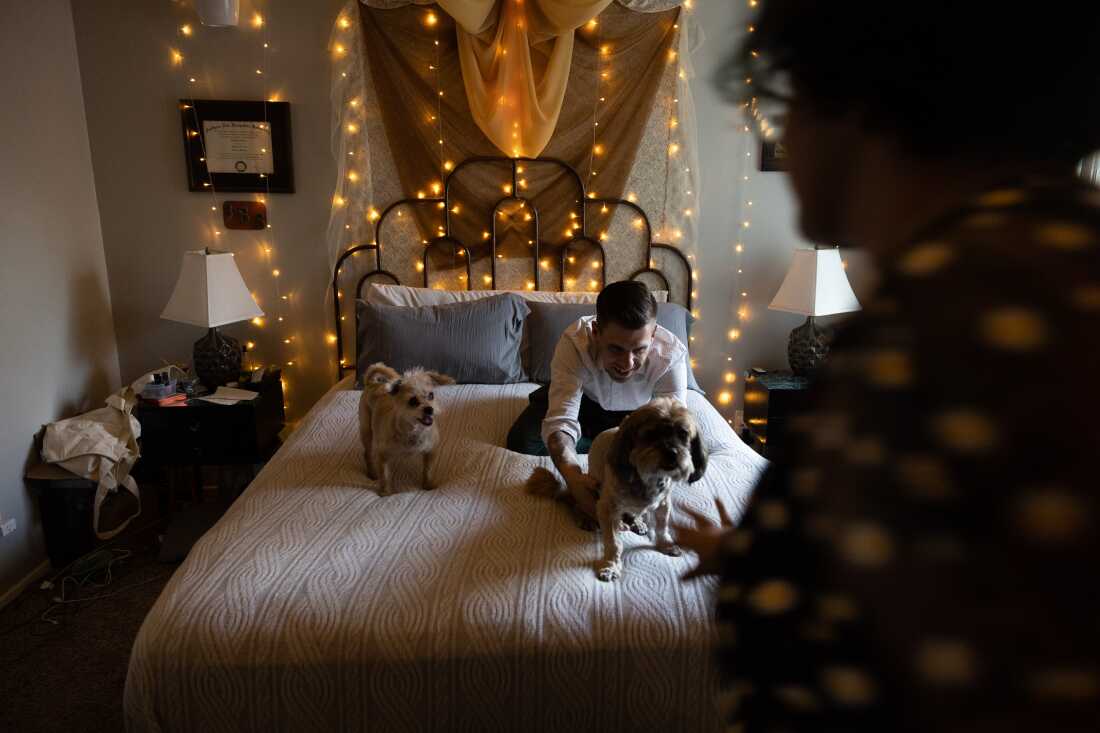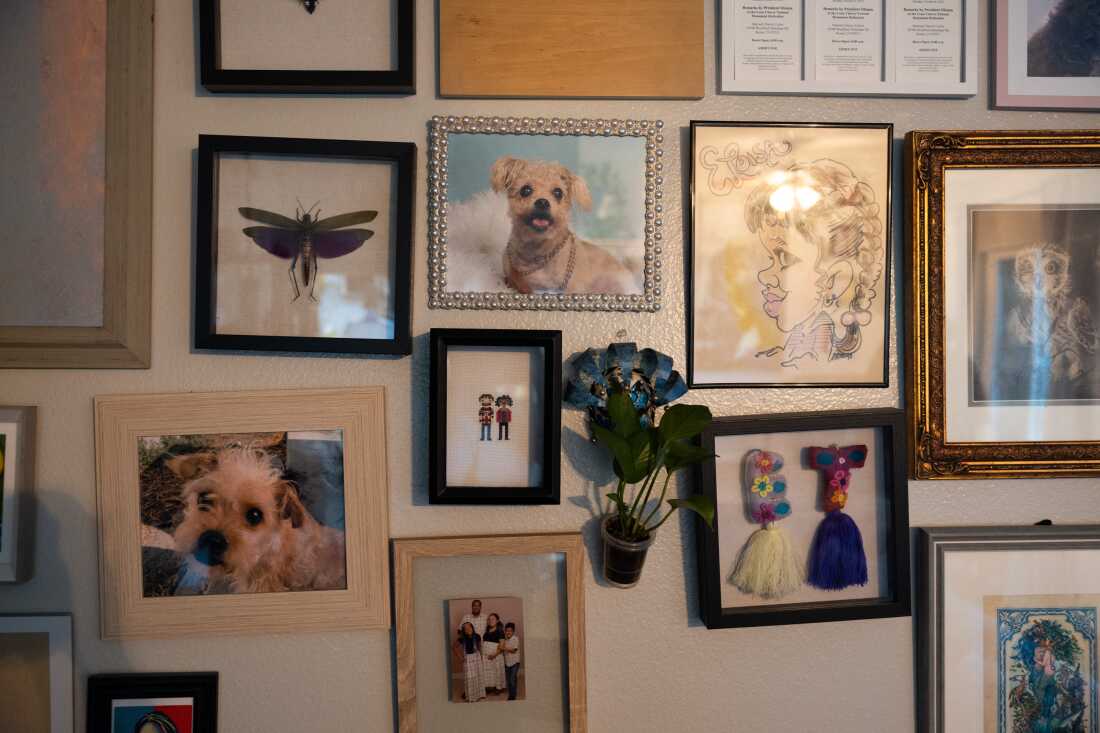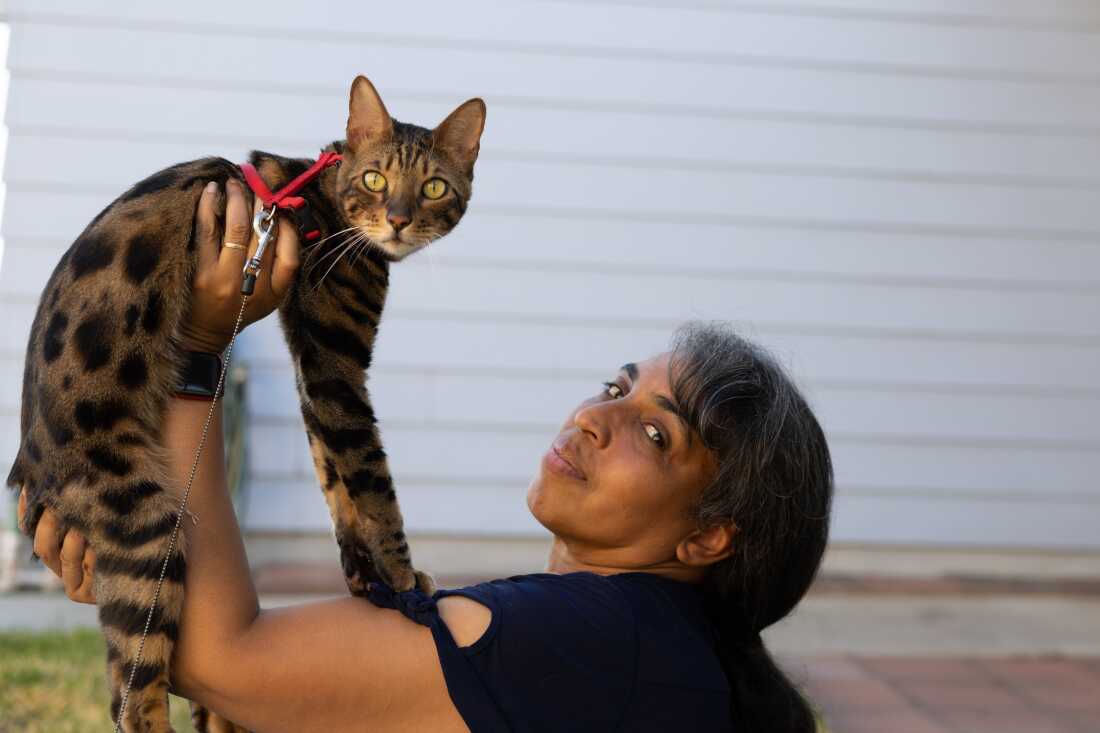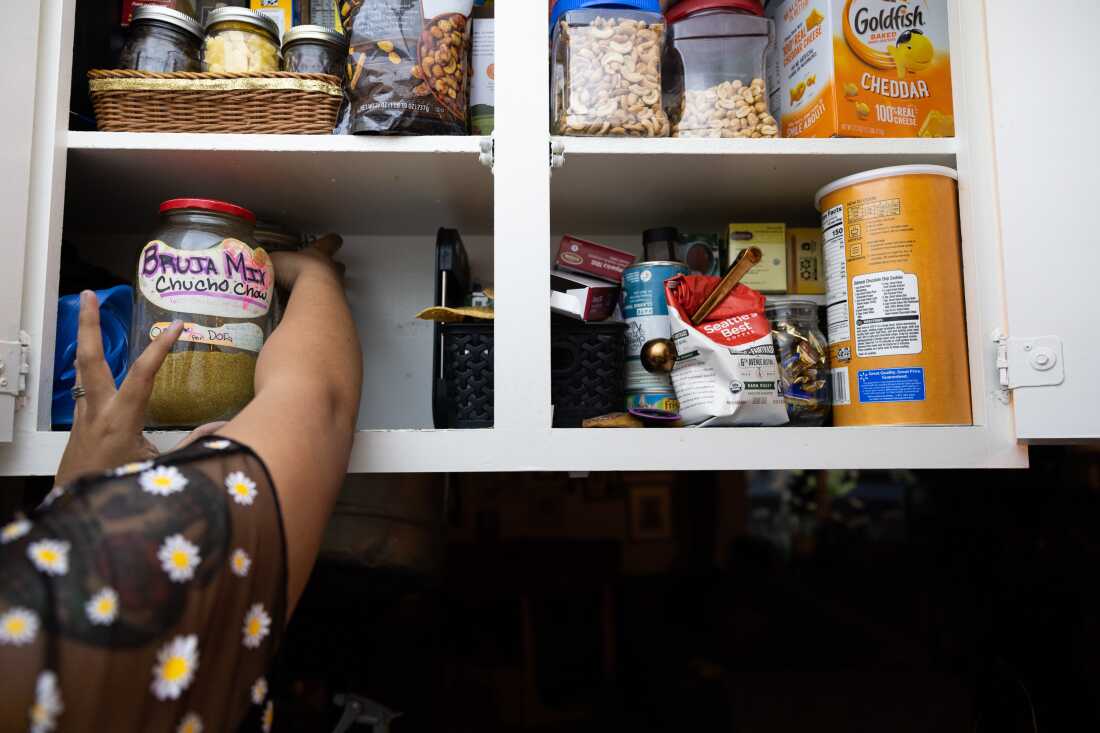
Thomas Guzowski greets his dogs, Mali, 13, and Yaretzi, 15, as they climb onto the bed.
Julie Leopo for NPR
hide legend
toggle caption
Julie Leopo for NPR
Like many Americans, Thomas Guzowski and his wife, Eloísa López, are doing everything they can to cut back on spending as they grapple with inflation.
This year, they even moved from Los Angeles to Redlands, California, to reduce their cost of living. But there’s one area of their budget they won’t compromise on: caring for Mali, their 13-year-old shih tzu, and Yaretzi, their 15-year-old poodle terrier mix.

“We are a childless family. There is no doubt that our dogs have been able to respond to that maternal instinct that many people have,” Guzowski explains.
But treating Mali and Yaretzi is expensive. Mali, for example, is blind in one eye and requires expensive prescription drugs.
“His eye drops cost over $200 a month,” Guzowski says. “I’m almost ashamed to say it out loud, because I know not everyone shares the same values. But that’s what we do, you know. I just work the hours it takes to make sure his eye is okay.”
Even though they’ve moved, Guzowski and López still spend an hour and a half each way back to Los Angeles so their dogs can see their old vet. Not only does it take longer, but the vet is also more expensive than the closer options they tried. The couple insists the care is better and worth the drive.

Photos of pet dogs Yaretzi and Mali adorn the walls of an apartment in Redlands, California, on July 18.
Julie Leopo for NPR
hide legend
toggle caption
Julie Leopo for NPR
Guzowski and López aren’t the only ones stretching the family budget for their pets. Many other pet owners have similar mindsets, in which they will make big sacrifices for their own personal expenses while refusing to do the same for their pets. furry companions.
The Pew Research Center found that 97 percent of pet owners consider their pets to be family members. Pete Scott, president of the American Pet Products Association, says that bond motivates owners to spend lavishly on their pets, even when finances are tight.
“It makes people feel good,” Scott says. “Ultimately, I think it’s more about psychology than rational financial behavior.”
When a meal at Carl’s Jr. becomes a treat
Guzowski and López continue to spend money on their dogs in other ways, although they rarely indulge themselves.
One of those rare occasions came after Guzowski got a nice raise when he landed a new job in January. The couple celebrated with a meal at Carl’s Jr., which cost them about $45.
“The price is so high that it’s no longer a convenience food, but a real luxury product,” Guzowski says.

Yet Guzowski and López continue to feed Mali and Yaretzi Blue Buffalo and Science Diet dog foods instead of cheaper options.
These costs are adding up. Prices for pets and pet products and services have increased 25.8% over the past five years, outpacing inflation. Veterinary services alone have increased even more, up 38.6% over the same period. Lately, however, these costs have started to level off.
Why Pet Costs Are Rising
Scott of the American Pet Products Association says the reasons for price increases across the pet industry are varied.
“The ingredients used are more expensive, the packaging is more expensive, the transportation costs are higher,” Scott says. “That’s going to trickle down the supply chain, even to the retailer. Labor costs are going up, and so are hourly wages.”
According to the American Pet Products Association, high costs are affecting more people than ever before. Two-thirds of American households own at least one pet. With so many pet owners, pet retailers are capitalizing: Pet owners are expected to spend more than $150 billion this year, a 55% increase since 2019.

But Guzowski hopes that paying more for food will pay off.
“It’s a kind of trust and belief that the more expensive brand is providing them with the nutrition they need, which will contribute to their health,” Guzowski says. “And that will hopefully translate into lower veterinary bills and a longer life.”
When your own groceries and your cat’s food cost the same
Lisa Wilkerson-Willis of Highland, Calif., also hopes the more expensive pet foods will pay off.
Wikerson-Willis, who works as an office administrator for a school bus company, keeps a strict budget. She clips coupons, buys clothes only when hers are worn out and grows her own tomatoes, onions, lettuce and sweet potatoes to save on produce.

Lisa Wilkerson-Willis received her purebred Bengal cat, Benny, as a wedding anniversary gift five years ago.
Julie Leopo for NPR
hide legend
toggle caption
Julie Leopo for NPR
But she refuses to skimp on the more expensive Wellness Core grain-free wet food for her Bengal cat, Benny.
“It costs me almost $100 a month to feed my cat. It’s kind of crazy: why is it so expensive?” she says.
Her own monthly grocery bill also comes to $100. But to her, Benny is worth every penny. She got him from her sister as an anniversary gift five years ago, after her two previous cats, Rocky and Inky, both died within a year of each other from kidney disease.

His veterinarian at the time attributed their health issues to their dry food diet, so she decided that Benny would only be fed premium wet food, regardless of cost.
“I can’t afford to leave him alone because if I do, he’s going to suffer,” she said. “He won’t be able to tell me because he has no voice.”
There are families who can’t stand it.
While some families go the extra mile for their pets, some people simply can’t afford the high costs anymore.
Last year, the Humane Rescue Alliance’s Washington office alone received 6,000 inquiries from families wanting to surrender their pets. Bobby Mann, the group’s program manager, said most of the reasons pets are surrendered are financial.

“Bruja Mix Chucho Chow” is a concoction that Eloísa López prepares for her dogs, Mali and Yaretzi.
Julie Leopo for NPR
hide legend
toggle caption
Julie Leopo for NPR
Expensive routines, unaccommodating owners and high veterinary costs were frequently cited by owners who would have kept their pet if their budget had allowed.
“What you don’t hear very often is, ‘Hey, I don’t want this dog or cat anymore,'” Mann says. “What you usually hear is, ‘Because of a difficult situation, I have to make the difficult choice to part with my pet.'”
But even as the cost of pet ownership increases, some people like Wilkerson-Willis say they could never part with a family member. She can’t even bear the thought of cutting back on Benny’s high-end food, though she’s sometimes tempted.
“Sometimes I look at cheap stuff and I’m drawn to it,” she says.
But it always comes right back to Benny’s favorite Wellness Core cans.
“It’s terrible,” she said.